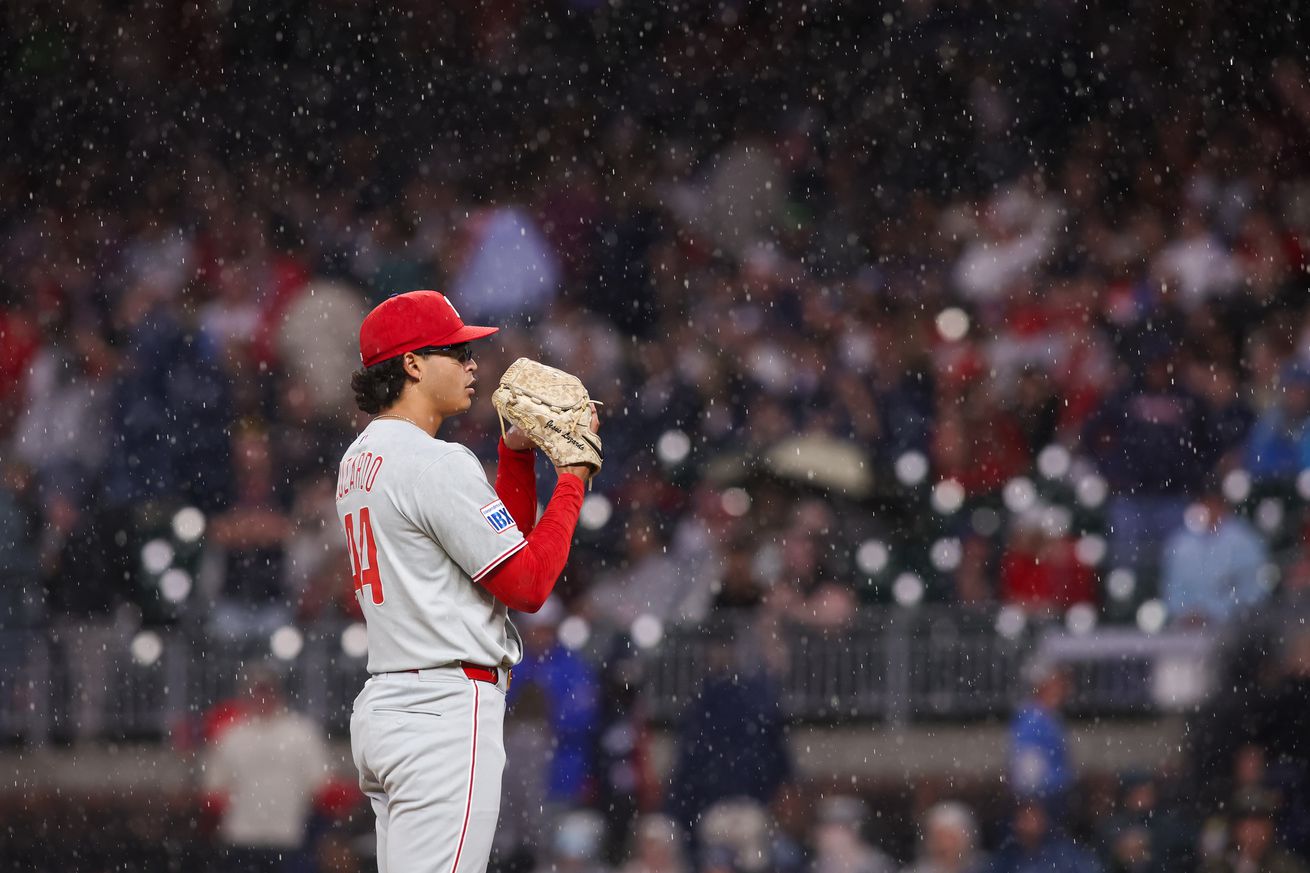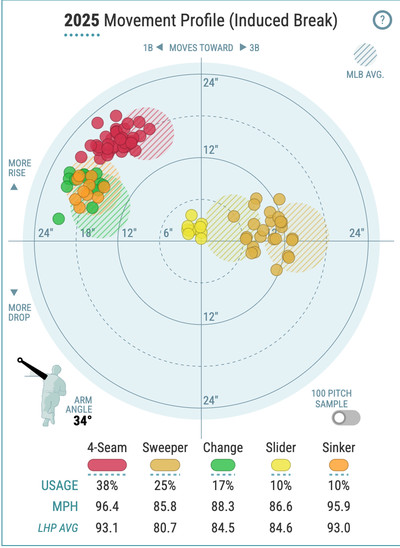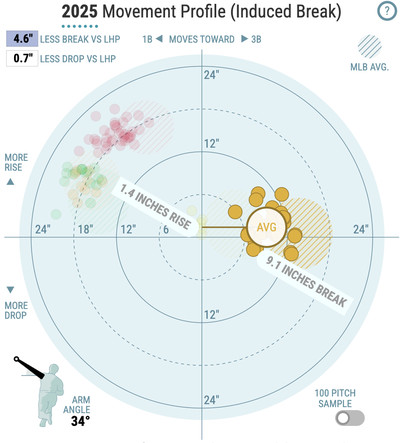
His sweeper is sweeping Phillies fans off their feet.
Call him fashionably late. 2023 was the Year of the Sweeper, with the pitch becoming the new fella in pitcher’s arsenals all across the nation, but Jesús Luzardo didn’t get around to adding one until just this season. If you haven’t noticed his sweeper yet, it’s easy to forgive; with Luzardo making his Phillies debut , and with a majority of his 2024 season lost to injury, everything about his pitching seems fresh. The horizontally-inclined debutanté pitch ought to get its flowers, though. It’s not the only thing that Luzardo is doing right this year. But it’s a particularly interesting aspect of what has so far been a breakout season.
Luzardo’s throws his sweeper 85.8 MPH, with a little less vertical movement than the average sweeper, and a whole lot less horizontal movement. He’s throwing it 24.8% of the time, making it his second-most-offered offering behind the 4-seam fastball; he’s taken to the pitch just like Phillies fans have taken to him. And it’s not hard to see why: batters are posting a .138 batting average against it, and slugging just .241. Batters are whiffing at it 46.9% of the time. The pitch works.
But let’s backtrack a bit: we can clearly see that the decision to add the sweeper was a good one. But what made him decide to do it in the first place? Some pitchers are in a constant state of tinkering and adding (see Wheeler, Zack), whereas others are more reluctant to change. But every pitch serves a purpose: if it’s being added to the arsenal, there’s a rationale behind it. The same holds true for Luzardo’s sweeper. Luzardo has long thrown a slider, a pitch similar to the sweeper: they both have significant horizontal movement towards the pitcher’s glove-side, with the distinctions being that the sweeper typically has more horizontal movement and slightly less velocity than its sliding cousin. There are reasons that you might throw both: more pitches means more for opposing batters to think about, and the similarity between the two can trip up batters. Surely both of these were factors in Luzardo’s decision to add the sweeper. But there’s another, less typical reason that Luzardo likely had in mind as he added the sweeper.
Here’s the movement profile for Luzardo’s current pitch mix. The dots are pitches Luzardo has thrown, and the dashed lines indicate the league-average movement for that pitch type from left-handed pitchers. Pitches left of center move towards Luzardo’s arm side, and pitches right of center move to his glove side. Generally pitchers like to use pitches with big glove-side movement against same handed hitters, since the pitch will move away from such batters as it approaches the plate.

You don’t have to be a pitching expert to see what makes the sweeper unique among his offerings: it’s the only one of his pitches that moves to his glove-side. The slider is typically a glove-side pitch, but Luzardo’s version has substantially less horizontal movement than the average slider, to the point where it doesn’t really move glove-side at all (actually, this season it’s moved ever-so-slightly towards his arm-side). That meant that coming into this season, he had nothing at all that would move away from left-handed batters. But now he does.
Based only on what we know about the sweeper, we would expect him to use it more often against lefties than against righties. We’d expect it to improve his performance against same-handed batters. And since the sweeper is similar to the slider, we might expect improved performance with the latter, since batters will now have to figure out which of the two it is before swinging.
And all that is borne out. The sweeper is Luzardo’s primary offering against left-handed batters, making up the majority of his offerings to them at 51%. Righties see it just 16% of the time. Luzardo allowed a WHIP of 0.97 against lefties in 2023 and 1.5 against them in the (recall, injury-afflicted) 2024 campaign. This year they’re posting a WHIP of just 0.7 against him. His slider has also benefitted from the new roommate: batters posted an average of .200 against it and slugged .347 against it last year, those numbers are down to .111 and .167 this year. Of course, we can’t attribute all of the slider’s improvement to the presence of the sweeper: improved health and small sample size may be playing a role. Still, the slider ought to consider sending the sweeper a nice gift basket.
One last question, though. Let’s take another look at the movement of his sweeper. Recall that the gold dots represent Luzardo’s sweepers, and the same-colored lines represent the average sweeper across the league’s lefties.

It just doesn’t move much horizontally compared to its brethren. How is Luzardo’s sweeper so good when it doesn’t do all that much sweeping? Part of it may be in the speed: the average sweeper from a southpaw flies at 80.7 MPH, whereas Luzardo’s moves 5 MPH faster. There’s also a possibility that the sub-average horizontal sweep may be working to his benefit: batters survived the Year of the Sweeper in 2023 and have now become quite used to the pitch, but Luzardo’s unusual version of it might throw a wrench into the works. It’s a sweeper, yes, but not the kind they’re used to. Conceivably, it might be like seeing someone you know with a radically new haircut; you know the face, but you’re still going to do a double take.
Speaking of double takes, Phillies fans did plenty of those when Luzardo took the mound in red pinstripes and started to show what he had to offer. But he won’t get too many of those going forward: his reputation is being quickly established. Luzardo fever is sweeping Philadelphia.